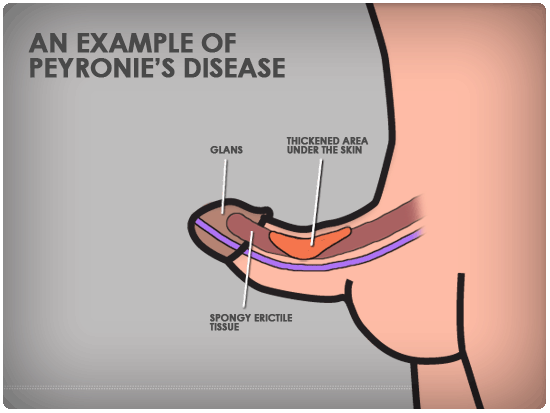Learning About Peyronie's Disease
/Peyronie's disease is a connective tissue disorder that affects 5-10% of all men, where fibrous scar tissue develops inside the soft tissue of the penis. This scar tissue leads to curved, and many times painful erections. This can make having sex, or maintaining an erection difficult. Similarly, this change in penile function coupled with a change in the “look” of the penis can lead to unwanted stress and anxiety in a man’s sex life. For some men, this disorder resolves on its own but for most it will more likely stay the same or worsen. A slight curve in the penis is not necessarily a cause for concern – but if it is or becomes significant, this should be evaluated by a doctor.
The symptoms of Peyronie's disease can appear suddenly or develop over time. Here are some common signs to look out for:
- Scar tissue: Scar tissue or plaques can be felt under the skin of the penis, and are flat lumps or an area of hard tissue.
- Bend to the penis: Penis bend is significant in those suffering from Peyronie’s and can curve upward, downward or to one side. Some may experience narrowing in the shaft of the penis during erection
- Erectile Dysfunction: Peyronie's disease might cause problems getting or maintaining an erection.
- Shortening of the penis: The penis might become shorter as a result of tissue scarring.
- Pain: there may be pain associated with having an erection when you suffer from Peyronie’s. For some this pain can also be present when the penis is not erect.
The exact causes of Peyronie’s still remain a mystery, but it is generally thought that Peyronie’s is a result of repeated penile trauma. This trauma can cause scar tissue and plaque to build up inside the soft tissue of the penis and lead to the obvious complications of Peyronie’s, like significant penile curvature or pain. The buildup of scar tissue in the penis is most noticeable when the penis is erect, as this area does not stretch with the rest of the tissue. “Trauma” to the penis can happen during rigorous sex, a sports injury or some type of blunt force trauma to the penile area.
Who is at risk?
Various factors can contribute to plaque buildup and wound scarring that can play a role in Peyronie's disease.
· Heredity: increased if your father or brother has had it
· Connective tissue disorders
· Age: prevalence increases with age.
· Smoking
· Prostate surgery
The effects of Peyronie’s include:
· Erectile dysfunction
· Inability to have sexual intercourse
· Difficulty conceiving
· Performance anxiety/ stress due to abnormal appearance of penis
How is it treated?
Peyronie's disease can be treated surgically or medically. Surgical intervention attempts to remove the plaque that has formed in the penis, or remove the penile tissue opposite the plaque to straighten the bend of the penis. Prescription medication comes as an injectable drug known as Xiaflex. This is the first FDA approved drug to treat Peyronies, and works by breaking down the plaque which causes the penile bend. Some studies have also shown that vitamin E improves Peyronie's disease.

